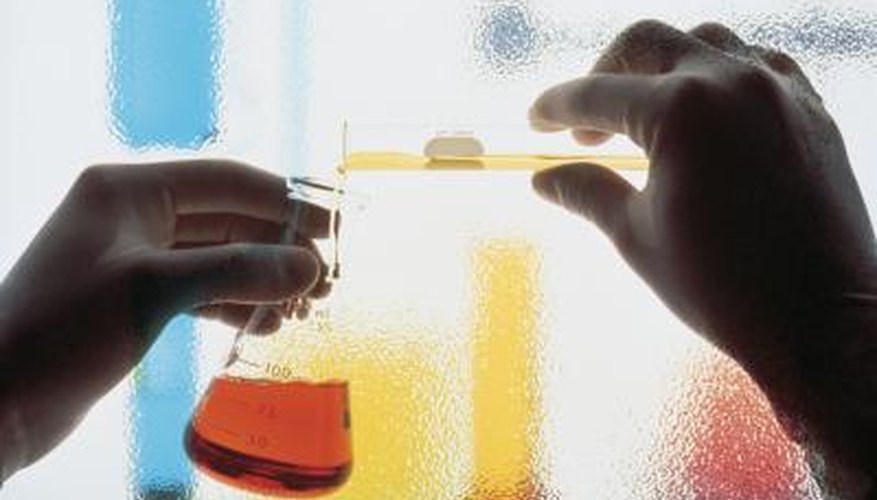Scientists use units of concentration to describe the amount of a chemical substance dissolved in a given volume of liquid. There are many different units for this purpose, including per cent by weight or volume, molarity and parts per million (ppm). When two solutions of the same chemical but having different concentrations are combined, the concentration of the resulting mixture will be different from either of the two starting solutions. You can calculate the concentration of the final mixture using a mathematical formula involving the volumes of the two combined solutions, as well as the initial concentrations of the two solutions.
- Scientists use units of concentration to describe the amount of a chemical substance dissolved in a given volume of liquid.
- You can calculate the concentration of the final mixture using a mathematical formula involving the volumes of the two combined solutions, as well as the initial concentrations of the two solutions.
Multiply, for each of the two solutions, the initial concentration of the solution by the volume of the solution which is measured out to make the combined mixture. For example, if you combined 80 millilitres (ml) of 300 ppm sodium chloride (NaCl) in water with 20ml of 500 ppm NaCl, you would calculate 300 times 80 (equal to 24,000) and 500 x 20 (equal to 10,000).
Add together the products of the two previous calculations. Call this "x" to simplify subsequent calculations. For the example, you would add 24,000 and 10,000 to obtain x = 34,000.
Add together the two volumes of the starting solutions to find the total combined volume of the mixture. In the case of the example, you would add 80ml and 20ml to obtain 100ml.
Divide the result of this most recent calculation into the value of "x." The result is the concentration of the solution made by combining the two initial solutions of differing concentrations, in the same units as your initial concentrations. For the example, you would calculate 34,000 divided by 100 to obtain a combined concentration of 340 ppm NaCl.
TIP
You can use any units you wish for the concentration values and volumes, so long as you use the same units for each of the two solutions.
